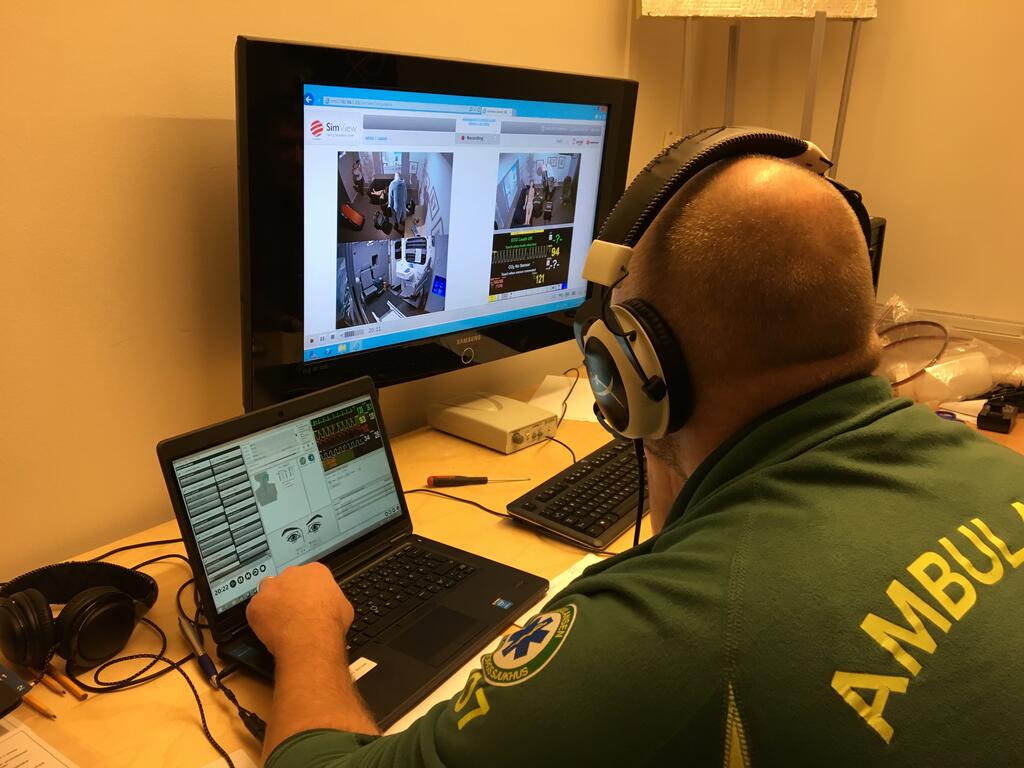Video communication from ambulances saves time, lives and costs to society
The ViPHS project - Video support in the PreHospital Stroke chain - was given the go-ahead in January to receive financing from the Innovation Fund in the Region Västra Götaland (VGR). Due to this decision, one of the founding stages of the project can be launched, where technology, design and working methods will be evaluated in a simulation study with VGR as a model. If the healthcare chain can be made more efficient and the time to the right treatment is reduced, lives can be spared and a chance for continued independence for the sufferer greatly increases. Accordingly, the costs to society linked to the disease are reduced.

This project initiative in ViPHS is headed by Lars Rosengren, Professor in neurology, Regional Stroke Council/Stroke Centre West and is a cooperation with Prehospital ICT Arena (PICTA), at Lindholmen Science Park.
“Besides PICTA and VGR/Sahlgrenska University Hospital, those participating in the project are the University of Borås, Skåne Region and ATC (the Ambulance Training Center) at the ambulance center at the hospital at Skaraborg. With the help of simulation, we will be able to assess how video communication between the region’s stand-by stroke service and ambulances with critical stroke patients can be handled in the best way,” says Lars Rosengren.
ViPHS has its foundation in PICTA’s PrehospIT project and its technical solutions and it involves various types of video support in the prehospital stroke medical care chain. ViPHS is divided into sub-projects that are intended for various parts of the healthcare chain. The current part concerns support in the ambulance. Step 1 - simulation and assessment, which will lead to a limited trial run in a clinical operative environment (step 2). After this, supporting evidence is available to ascertain if it can be widely implemented (step 3), which can happen relatively quickly.
In addition to increased precision in decisions regarding the best treatment for critical stroke patients, a clinical implementation of ViPHS will also involve focusing on the equality perspective, as well as having a positive socio-economic effect.
“Video support will enable neurological experts to assess the patient and decide on what is the most suitable health care process, together with the ambulance staff. This will also contribute to more equal health care - everyone will have similar prerequisites regardless of gender, ethnicity or where the patient is located. Today, for instance, critical stroke patients, who are located in isolated parts of the region, don’t receive the best possible treatment. If the patient can get the right treatment in the shortest possible time, then the chances of returning to a normal life are much higher. Besides the positive aspects for the affected persons, this will also imply reduced costs to society for what is the most expensive somatic disease of our time,” says Bengt Arne Sjöqvist, Professor of practice, Chalmers University of Technology, as well as Program responsible for PICTA.
Background Information
- Stroke affects approximately 25,000 people each year in Sweden – in the VGR region around 4,000. About 20% of those affected die and approximately 30% become functionally dependent. The remaining 50% are deemed “functionally independent” but this group can have lifelong “lighter” neurological disorders.
- Stroke is the most expensive somatic disease in Sweden. The annual cost has been estimated in the region of SEK 19 billion.
- The most important factor for the outcome of stroke treatment through thrombolysis (medicine that dissolves minor blood clots), and thrombectomy (where larger blood clots are mechanically drawn out) is the time needed until the circulation of blood in the brain has been restored. For example, in the VGR region and northern Halland, SU/Sahlgrenska is the only hospital where thrombectomy can be performed.
- This means that if a decision on thrombectomy can be made early on in the healthcare chain, 1–2 hours can be spared for recanalization (where the flow can be restored to blocked vessels), on a patient who is transported directly to SU/Sahlgrenska hospital for thrombectomy, instead of being brought to a nearer hospital first where this treatment is not performed.
- At the same time, if a patient who is suitable for thrombolysis is brought to SU/Sahlgrenska instead of the nearer hospital, important time for recanalization is lost due to longer transportation time.
- Through video support and the regional stand-by stroke service in VGR, there is always a neurological expert at hand to consult with the ambulance staff on the patient’s symptoms and decide on where the patient should be transported, as well as suitable initial treatment.
- Video communication with stroke doctors and the regional stand-by stroke service provides better quality in prehospital assessment. The technology provides many benefits such as support if the stroke alarm should be triggered or called off, or support in complicated cases.
Read more:
PICTA
PrehospIT-project
Stroke Center West
Lindholmen Science Park
Questions about the project?
Lars Rosengren
Lars.Rosengren@neuro.gu.se
Bengt Arne Sjöqvist
bengt.arne.sjoqvist@lindholmen.se
